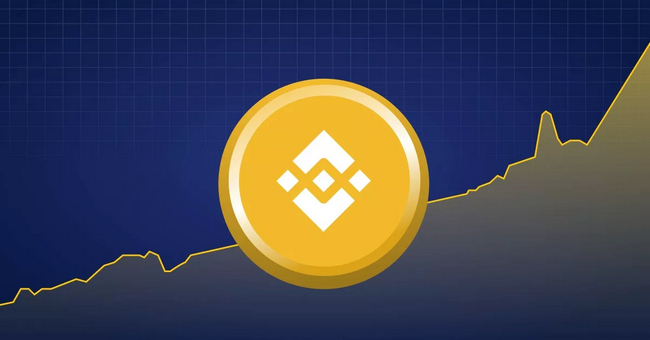-
 Bitcoin
Bitcoin $103,480.9011
0.34% -
 Ethereum
Ethereum $2,493.9186
6.69% -
 Tether USDt
Tether USDt $1.0000
0.00% -
 XRP
XRP $2.4417
3.56% -
 BNB
BNB $657.1939
3.40% -
 Solana
Solana $173.3178
1.02% -
 USDC
USDC $0.9999
-0.01% -
 Dogecoin
Dogecoin $0.2372
15.72% -
 Cardano
Cardano $0.8350
6.38% -
 TRON
TRON $0.2615
-0.42% -
 Sui
Sui $4.0547
3.23% -
 Chainlink
Chainlink $16.9173
5.66% -
 Avalanche
Avalanche $24.7388
6.00% -
 Stellar
Stellar $0.3091
4.36% -
 Shiba Inu
Shiba Inu $0.0...01625
8.67% -
 Hedera
Hedera $0.2157
7.63% -
 Hyperliquid
Hyperliquid $25.4124
2.11% -
 Toncoin
Toncoin $3.3953
3.93% -
 Bitcoin Cash
Bitcoin Cash $423.6665
3.41% -
 Polkadot
Polkadot $5.1181
5.59% -
 UNUS SED LEO
UNUS SED LEO $8.6280
-0.69% -
 Litecoin
Litecoin $104.1244
5.06% -
 Monero
Monero $328.6736
6.73% -
 Pepe
Pepe $0.0...01369
11.01% -
 Bitget Token
Bitget Token $4.8458
8.47% -
 Dai
Dai $0.9999
-0.02% -
 Pi
Pi $0.7401
2.21% -
 Ethena USDe
Ethena USDe $1.0003
0.00% -
 Uniswap
Uniswap $6.9790
9.74% -
 Bittensor
Bittensor $453.4058
6.32%
how to transfer bnb
Understanding your wallet options, such as software, hardware, and exchange wallets, is crucial before transferring Binance Coin (BNB) to optimize security and ease of use.
Nov 07, 2024 at 01:00 pm

Ultimate Guide to Transferring Binance Coin (BNB) Seamlessly
Binance Coin (BNB), the native token of the Binance ecosystem, plays a pivotal role in the cryptocurrency landscape. Understanding how to effectively transfer BNB is crucial for harnessing its utility and maximizing its potential. This comprehensive guide will delve into everything you need to know about transferring BNB, empowering you to handle your transactions with confidence and efficiency.
Step 1: Understanding Your Wallet Options
Before initiating a BNB transfer, it is essential to select the most appropriate wallet solution. Here are the key considerations:
- Software Wallets: These are digital wallets that are installed on your computer or mobile device. They provide a user-friendly interface and are suitable for both beginners and experienced users.
- Hardware Wallets: These are physical devices that store your private keys offline, offering enhanced security. They are recommended for storing large amounts of BNB or for those who prioritize security.
- Exchange Wallets: These are wallets provided by cryptocurrency exchanges. They are convenient, but it's important to note that the exchange controls your private keys, which may raise security concerns.
Step 2: Choosing a Transfer Method
There are various methods for transferring BNB, each with its own advantages and drawbacks. Here's an overview:
1. On-Chain Transactions:
In an on-chain transaction, BNB is directly transferred from one wallet address to another through the Binance blockchain. This method ensures immutability and security, but it involves transaction fees and can take longer to complete.
2. Cross-Chain Transactions:
Cross-chain transactions allow you to transfer BNB between different blockchains, such as from Binance Smart Chain to Ethereum. This method provides flexibility, but it may require additional steps and may come with higher fees.
3. Via Exchanges:
Many exchanges offer BNB transfer services. This method is generally fast and convenient, but you may be subject to exchange fees and potential delays.
Step 3: Preparing for the Transfer
Before initiating the transfer, there are a few essential steps:
- Confirm the Recipient Address: Carefully verify the recipient's BNB wallet address. An incorrect address could result in the loss of your funds.
- Estimate Transaction Fees: Transaction fees vary depending on the transfer method and network conditions. Estimate the fees before confirming the transaction.
- Set a Transaction Memo (Optional): Some exchanges require a memo for cross-chain transfers. This memo helps identify and track the transaction.
Step 4: Initiating the Transfer
Once you have selected your transfer method and prepared all the necessary information, follow these steps to initiate the transfer:
- Software Wallets: Navigate to the Send or Transfer section in your software wallet, input the recipient's address, the amount of BNB, and the transaction fee.
- Hardware Wallets: Connect your hardware wallet to the designated software interface, enter your PIN, and then follow the on-screen instructions to complete the transfer.
- Exchange Wallets: Log in to your exchange account, navigate to the Withdraw section, select BNB, and input the recipient's address, the amount of BNB, and the transaction fee.
Step 5: Monitoring the Transfer
After initiating the transfer, you can monitor its progress by using the following methods:
- Blockchain Explorer: Use a blockchain explorer to track the status of your transaction. Input the transaction ID or the recipient's address to view the details.
- Wallet Notifications: Most wallets will provide notifications for successful or failed transfers.
Step 6: Troubleshooting Tips
In case of any issues with your transfer, try these troubleshooting tips:
- Check the Transaction Hash: If the transaction is taking longer than expected, you can use the transaction hash to track its progress on a blockchain explorer.
- Confirm the Recipient Address: Double-check that you entered the correct recipient's address. Even a single character error can cause the transaction to fail.
- Contact Customer Support: If you encounter any persistent issues, do not hesitate to contact the customer support team of the wallet or exchange you are using.
Disclaimer:info@kdj.com
The information provided is not trading advice. kdj.com does not assume any responsibility for any investments made based on the information provided in this article. Cryptocurrencies are highly volatile and it is highly recommended that you invest with caution after thorough research!
If you believe that the content used on this website infringes your copyright, please contact us immediately (info@kdj.com) and we will delete it promptly.
- XRP Whales Accumulate 880M Tokens As Bulls Aim to Break Through Resistance
- 2025-05-11 01:10:12
- EchoStar Corporation (NASDAQ: SATS) closed at $24.19 on May 9, gaining 1.43% after reporting mixed first-quarter 2025 results.
- 2025-05-11 01:10:12
- Bitcoin (BTC) Still Struggles to Reach the Symbolic Target of $150,000, Despite a Recent Rebound to $104,000
- 2025-05-11 01:05:12
- Here’s How Many Bitcoin (BTC) Holders Are Profiting at the Moment
- 2025-05-11 01:05:12
- Belo Horizonte city council votes to declare the city the “Capital of Bitcoin.”
- 2025-05-11 01:00:12
- Crypto Market Cap Reaches $103K as Bitcoin ($BTC) Price Surges 0.30%
- 2025-05-11 01:00:12
Related knowledge

What is Ethereum’s Slashing mechanism and how to punish malicious behavior?
Feb 20,2025 at 03:08am
Key PointsOverview of slashingDifferent types of slashing in EthereumIncentives and consequences of slashingIdentifying and reporting slashed validatorsOngoing discussions and potential improvementsEthereum's Slashing Mechanism: Punishing Malicious BehaviorEthereum's slashing mechanism is an essential tool for ensuring network security and punishing mal...

What is the verifier node of Ethereum and how to become a verifier?
Feb 19,2025 at 06:00pm
The Verifier Node of Ethereum: A Comprehensive GuideKey Points:What is a Verifier Node?How to Become a Verifier NodeResponsibilities and Rewards of a Verifier NodeMinimum Requirements for Becoming a Verifier NodePotential Difficulties in Running a Verifier Node1. What is a Verifier Node?A Verifier Node is an independent entity on the Ethereum network th...

What is Ethereum’s staking, and how to participate and earn money?
Feb 19,2025 at 04:37pm
Key Points:Understanding Ethereum's Staking MechanismSteps to Participate in StakingBenefits and Rewards of StakingSecurity and Risk ConsiderationsTechnical Requirements and Hardware OptionsPotential Challenges and Troubleshooting TipsFAQs on Ethereum StakingWhat is Ethereum's Staking?Proof-of-Stake (PoS) is a consensus mechanism used in blockchain netw...

What is Ethereum’s DAO (Decentralized Autonomous Organization) and how does it work?
Feb 20,2025 at 03:12am
Key PointsDefinition and Structure of a DAOGovernance and Decision-Making in DAOsBenefits and Use Cases of DAOsChallenges and Limitations of DAOsWhat is Ethereum's DAO (Decentralized Autonomous Organization) and How Does It Work?Definition and Structure of a DAOA Decentralized Autonomous Organization (DAO) is an innovative governance and management fram...

What is Ethereum's multi-signature wallet and how to improve security?
Feb 20,2025 at 02:18pm
Key Points:Understanding the Concept of a Multi-Signature WalletBenefits and Drawbacks of Multisig WalletsRequirements for Setting Up a Multisig WalletStep-by-Step Guide to Generating a Multisig WalletImplementing Strategies for Enhanced Security1. Understanding the Concept of a Multi-Signature WalletA multi-signature (multisig) wallet in the Ethereum e...

What is Ethereum's oracle and how to provide data for smart contracts?
Feb 21,2025 at 01:30am
Key Points:Understanding the concept of oracles in EthereumExploring different types of oraclesDetailed guide on how to provide data for smart contractsAddressing potential challenges and considerationsWhat is Ethereum's Oracle?Oracles are crucial components in the Ethereum ecosystem, enabling smart contracts to access real-world data and off-chain even...

What is Ethereum’s Slashing mechanism and how to punish malicious behavior?
Feb 20,2025 at 03:08am
Key PointsOverview of slashingDifferent types of slashing in EthereumIncentives and consequences of slashingIdentifying and reporting slashed validatorsOngoing discussions and potential improvementsEthereum's Slashing Mechanism: Punishing Malicious BehaviorEthereum's slashing mechanism is an essential tool for ensuring network security and punishing mal...

What is the verifier node of Ethereum and how to become a verifier?
Feb 19,2025 at 06:00pm
The Verifier Node of Ethereum: A Comprehensive GuideKey Points:What is a Verifier Node?How to Become a Verifier NodeResponsibilities and Rewards of a Verifier NodeMinimum Requirements for Becoming a Verifier NodePotential Difficulties in Running a Verifier Node1. What is a Verifier Node?A Verifier Node is an independent entity on the Ethereum network th...

What is Ethereum’s staking, and how to participate and earn money?
Feb 19,2025 at 04:37pm
Key Points:Understanding Ethereum's Staking MechanismSteps to Participate in StakingBenefits and Rewards of StakingSecurity and Risk ConsiderationsTechnical Requirements and Hardware OptionsPotential Challenges and Troubleshooting TipsFAQs on Ethereum StakingWhat is Ethereum's Staking?Proof-of-Stake (PoS) is a consensus mechanism used in blockchain netw...

What is Ethereum’s DAO (Decentralized Autonomous Organization) and how does it work?
Feb 20,2025 at 03:12am
Key PointsDefinition and Structure of a DAOGovernance and Decision-Making in DAOsBenefits and Use Cases of DAOsChallenges and Limitations of DAOsWhat is Ethereum's DAO (Decentralized Autonomous Organization) and How Does It Work?Definition and Structure of a DAOA Decentralized Autonomous Organization (DAO) is an innovative governance and management fram...

What is Ethereum's multi-signature wallet and how to improve security?
Feb 20,2025 at 02:18pm
Key Points:Understanding the Concept of a Multi-Signature WalletBenefits and Drawbacks of Multisig WalletsRequirements for Setting Up a Multisig WalletStep-by-Step Guide to Generating a Multisig WalletImplementing Strategies for Enhanced Security1. Understanding the Concept of a Multi-Signature WalletA multi-signature (multisig) wallet in the Ethereum e...

What is Ethereum's oracle and how to provide data for smart contracts?
Feb 21,2025 at 01:30am
Key Points:Understanding the concept of oracles in EthereumExploring different types of oraclesDetailed guide on how to provide data for smart contractsAddressing potential challenges and considerationsWhat is Ethereum's Oracle?Oracles are crucial components in the Ethereum ecosystem, enabling smart contracts to access real-world data and off-chain even...
See all articles






















































































